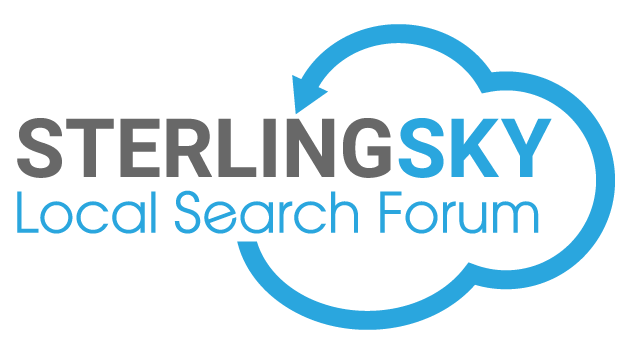The other day I took a hard look at some google adwords data for a campaign and was startled to see that about 1/2 of 80,000 "impressions" for searches over the last 3 months were identified by zip codes. The other 1/2 were identified by city name and then a relatively few didn't have location data.
1/2 of locations for 80,000 impressions by zip code. That is a lot and very granular. For city locations for this campaign we could peer into the city itself and see which zip codes were generating more searches for the industry/vertical. I then went back to our proprietary data for leads and sales. Similarly higher numbers of both leads and sales from the zips where the most search phrases were generated and we had similarly high numbers of leads and sales.
I looked at the same adwords campaign for year to date--> about 500,000 impressions. I saw about 43% leads with zip data. Could it be that google continues to improve its drill down location data as time moves on?
Wow!!! three important locational data points and they all coincided. I saw a similar pattern with the zip codes for a larger regional "town" with 3 major zips and 2 smaller zips. Lots of search phrases, lots of leads, and lots of sales.
For the bigger city analytics wasn't a help. Currently analytics drills down to the town/city level. But not zips. Nevertheless google has that higher level of granular data. They might not be showing it currently...but its there.
Per this article, though analytics might be able to drill down into the zip code level via Universal Analytics and Dimension Widening. Google Analytics for Lead Generation in 2013 and Beyond (Part 1)
I haven't looked at that yet. has anyone here implemented this and used analytics in this manner?????
I think the implications at zip code level are extensive and interesting including some of the following:
1. Its very relevant for campaigns into cities with multiple zip codes. For the types of services that are ubiquitous and highly competitive, as google gains greater confidence as to the more precise locations of a user it could alter the pac to show smb's that are closer by zip not just the entire city.
After all if you are on the west side of Chicago do you really want to fight traffic to visit a dentist or an accountant on the east side of the city when there are a plethora of dentists or accountants far closer and far easier to access.
2. With the above example it could affect the PAC that we see...adjusting rankings by zip code proximity.
3. As I looked at the data I was able to see towns with multiple zips where their was significant traffic by zip rather than the bigger region around it.
That is sweet. We can design micro campaigns for local media that get exactly where there are large groups of possible buyers rather than spread it throughout a city including zip codes and areas that don't work.
It really grabbed me as a possibility to adjust the PAC by zip's. Dang...that could further complicate local seo efforts into the PAC.
Anyone have further experience with this? I was overwhelmed by how granular the data is at this point.
1/2 of locations for 80,000 impressions by zip code. That is a lot and very granular. For city locations for this campaign we could peer into the city itself and see which zip codes were generating more searches for the industry/vertical. I then went back to our proprietary data for leads and sales. Similarly higher numbers of both leads and sales from the zips where the most search phrases were generated and we had similarly high numbers of leads and sales.
I looked at the same adwords campaign for year to date--> about 500,000 impressions. I saw about 43% leads with zip data. Could it be that google continues to improve its drill down location data as time moves on?
Wow!!! three important locational data points and they all coincided. I saw a similar pattern with the zip codes for a larger regional "town" with 3 major zips and 2 smaller zips. Lots of search phrases, lots of leads, and lots of sales.
For the bigger city analytics wasn't a help. Currently analytics drills down to the town/city level. But not zips. Nevertheless google has that higher level of granular data. They might not be showing it currently...but its there.
Per this article, though analytics might be able to drill down into the zip code level via Universal Analytics and Dimension Widening. Google Analytics for Lead Generation in 2013 and Beyond (Part 1)
I haven't looked at that yet. has anyone here implemented this and used analytics in this manner?????
I think the implications at zip code level are extensive and interesting including some of the following:
1. Its very relevant for campaigns into cities with multiple zip codes. For the types of services that are ubiquitous and highly competitive, as google gains greater confidence as to the more precise locations of a user it could alter the pac to show smb's that are closer by zip not just the entire city.
After all if you are on the west side of Chicago do you really want to fight traffic to visit a dentist or an accountant on the east side of the city when there are a plethora of dentists or accountants far closer and far easier to access.
2. With the above example it could affect the PAC that we see...adjusting rankings by zip code proximity.
3. As I looked at the data I was able to see towns with multiple zips where their was significant traffic by zip rather than the bigger region around it.
That is sweet. We can design micro campaigns for local media that get exactly where there are large groups of possible buyers rather than spread it throughout a city including zip codes and areas that don't work.
It really grabbed me as a possibility to adjust the PAC by zip's. Dang...that could further complicate local seo efforts into the PAC.
Anyone have further experience with this? I was overwhelmed by how granular the data is at this point.




